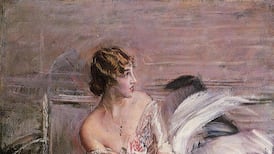When I asked my 14-year-old son recently to name, off the top of his head, a classic “smell of Dublin”, he had to think for a moment. Then he said: “petrol”. After further reflection, he added: “And Guinness’s” (we live near the brewery). That was it.
If smell is the most powerful life-long trigger of memory, as often claimed, I worry that his childhood has been olfactorily impoverished compared with previous generations. But on the plus side, at least it never occurred to him to mention the Liffey, which would once have been top of everyone’s list.
Besides, I only sought his opinion while trying to compile my own hit parade of quintessential Dublin smells and struggling to get into double figures. There were a few obvious ones, of course: coffee roasting in Bewley’s, the old leather-bound books in Trinity College’s Long Room, clouds of soap product wafting out the door of Lush.
And yes, Guinness’s, which is actually two smells. Everyone mentions the hops, because hops are more mysterious than barley. But I suspect it’s the roasting of the latter, with its coffee-like pungency, that most people think of as the brewery aroma.
Not far from there, meanwhile, is another quintessential Dublin smell: fresh horse manure, still more common in and around the Liberties than in many parts of rural Ireland.
Near town, no Top 10 could leave out the vinegary cocktail of Burdock’s (or any city chipper of your choice), while in a similar but more specialised vein, any list would also have to include the smell of hamburgers, as seasoned by adrenalin and optimism, on match-day approaches to Croke Park or Lansdowne Road.
The city flower stalls have their own fragrances, as do the markets area in general. And a small, personal favourite of mine is that of newly baked cinnamon rolls emerging from the oven in Simon’s Place (one of Dubliner’s older and better corner cafés) on a Saturday afternoon.
On behalf of all hardware shops, my list would extend to the manly-smelling interior of Lenehan’s of Capel Street, and the fresh timber in Chadwick’s. By contrast, there is also the delicate odour of Weir’s of Grafton Street, which I think of as the smell of old money but is probably just furniture polish.
After that, I’m out of ideas. I thought there would be at least one pub in my collection. But perhaps luckily (for legal reasons), I can’t think of any Dublin drinking establishment now with a unique or even distinctive smell.
Since indoor smoking and carpets went out of fashion, pubs are in general less odiferous than they were. As often as not these days, it’s only their cleaning products you notice.
This may be part of a broader truth: that Dublin (and Irish) life is blander than in former times, at least to the nose.
There are large swaths of the city now that I don’t associate with any particular smell. But on the whole, this may be a positive development.
For every childhood aroma older Dubliners might feel nostalgic for – Lemon's Sweetshop, say, or even the John Player cigarette factory – there would once have been a tannery, glue factory, knacker's yards, or other noxious neighbour to match. Much has changed for the better since James Joyce refused to apologise for the grim realism of his Dubliners stories on the grounds that it was "not my fault that the odour of ashpits and old weeds and offal" hung around them.
Anyway, while racking my memory for more recent examples, it struck me that somebody somewhere should open a Museum of Smell. It doesn’t seem to have been done anywhere in the world, except on a miniature level, in perfumeries, or as art installations. And it would be hard to do well, but it would be a powerful thing to recreate scents that have disappeared from everyday life as a way of bringing exhibits alive.
When I mentioned this to Trevor White of the Little Museum of Dublin, he told me that – ironically – his current exhibitions include one on the famous streetscapes of James Malton. Malton depicted the glory era of Georgian Dublin: an age when the city was extremely smelly compared with today, although you'd never guess that from his elegant, sparsely populated scenes.
But maybe the Little Museum should consider adding an olfactory element to future collections. If it did, Exhibit A might involve a recreation of the smell of the Liffey circa 1980, as immortalised by Bagatelle. It wouldn’t be for the faint-hearted. The results would have to be contained in a well-stoppered bottle, to be sniffed at the visitor’s risk, and only after signing a disclaimer.












